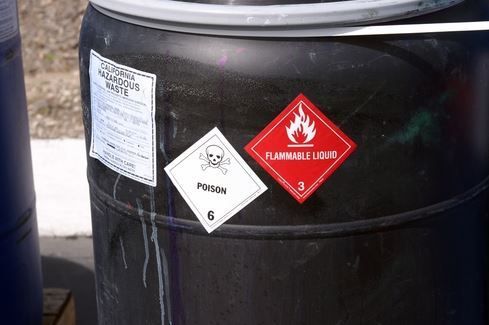How Should You Safely Dispose Of Pesticides?

Most people know that pesticides can be dangerous if handled improperly. If people do not use the correct amount, spray too much or they don't wear the right clothing, they put themselves at risk for getting sick or even going to the hospital. However, even if you do follow the proper safety protocol for using pesticides, what are you supposed to do with them when you're done? Is there a right and a wrong way to dispose of pesticides, or can you simply throw them in the trash and be done with it? The answer is more complicated than you think. Consider these tips on how to safely dispose of pesticides.
What not to do
Many homeowners and even farmers might not know how to properly get rid of pesticides, so they'll just pour them down the sink drain. That should be fine, right? Wrong. Getting rid of pesticides is much harder than it seems. Pouring these chemicals down the drain can potentially harm your septic system as well as your entire municipality's water-treatment facilities, which you definitely don't want to do. Even if you're handling a less toxic pesticide, you don't want to take a risk by disposing of it in a sink drain or toilet.
What you should do
If you have leftover pesticide concentrate, you can either continue to dilute it with water and apply it to other crops and plants, or you can choose to bring it to a hazardous-waste collection site. These sites know how to properly get rid of these harmful chemicals without letting them get into water systems and other public facilities.
If you have an empty container of pesticide, don't immediately throw it in the trash. Most of the time, there will be a good amount of pesticide residue left over in the container. It's important that you thoroughly rinse this container and the spray nozzle out with water before throwing it in the trash. One way to do this is by filling the container with water, and then spraying out the water through the hose and sprayer to ensure that both are fully rinsed. Spray this watered down mixture on the same areas as before, such as crops and plants. Don't spray it on one random patch of land where young children and pets could get into it.
Read the label
Every pesticide is different and may have different toxicity levels over time. That's why it's important for all homeowners to fully read the label when using the product as well as when they are disposing of it. Usually the label will have instructions for how people should dispose of the product depending on its strength and how old it is. Some may advise that you simply bring it to a hazardous waste site, especially if it's strong, while others might advise that you properly rinse the container out and then throw it in the trash. Regardless of how you dispose of it, make sure to wear gloves and other protective clothing to prevent being harmed by the chemicals.
CONTACT US
Tel: +44 (0) 151 649 4000
Email: marketing@greyhoundchrom.com
FOLLOW US
YOU MAY ALSO BE INTERESTED IN OUR NEWSLETTER
About The Author
Susan Massie, Sales & Marketing Director, Greyhound Chromatography and Allied Chemicals Email: sue@greyhoundchrom.com
Susan Massie is the Sales & Marketing Director for Greyhound Chromatography and Allied Chemicals, affectionately known as 'Greyhound' in our scientific community. Greyhound was founded by Susan's husband Paul Massie more than 40 years ago, Susan hasn't been in the business for all of that time but has been involved with Greyhound for over 19 years. Greyhound continues to grow, expanding into new markets and taking on the challenges of our ever changing environment. It's heartwarming to witness the world waking up to the fact that we are damaging our planet on a daily basis. Every action we take has a direct effect on our planet and the world we leave behind for future generations. Susan is passionate about climate change and is happy to work in an industry that can have a direct effect on reducing the impact of our actions on the environment. All of the team at Greyhound take our responsibilities very seriously, the products that we supply are used by the world's leading scientists and chemists as they endeavour to monitor and repair the environment. All is not lost, if we all take responsibility for our actions, from reducing our waste and reusing or recycling our material collateral we can make a difference. The internet is full of useful advice and guidance, Susan is proud to contribute to that wealth of knowledge whenever she can.
Greyhound prides itself on personal service which provides prompt, efficient, cost-effective, safe delivery of all products. Greyhound provides technical advice and distribution of Certified Reference Standards and Materials, Laboratory Consumables, Solvents and Reagents across all scientific disciplines. Greyhound Chromatography offers over 1 Million products from its UK warehouse. The team at Greyhound are proud to support the work of the world's leading scientists and chemists as they challenge the abuse of our planet and try to make a difference to the world we leave behind for our ancestors.
You can view Susan's Linked In Profile here https://www.linkedin.com/in/susan-massie-79ab4121/
You can view Greyhound Chromatography’s LinkedIn page here https://www.linkedin.com/company/greyhound-chromatography/














